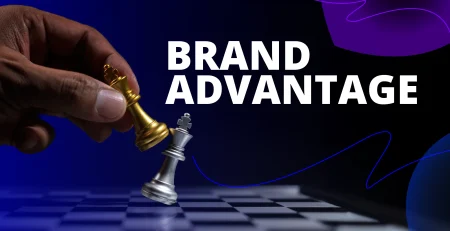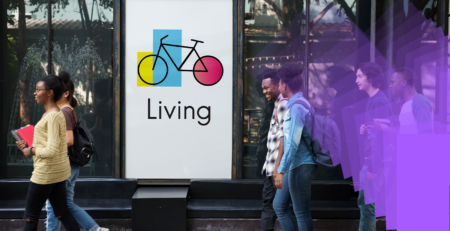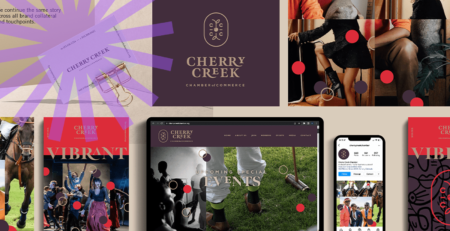25 Resilient Brand Identity Tactics for Lasting Success
The Challenge Every Brand Faces
Your brand exists in a world of constant change. Market disruptions arrive without warning. Consumer behaviors shift overnight. Technology rewrites the rules of engagement. Yet some brands don’t just survive these challenges: they grow stronger through them.
The difference? These brands have built resilience into their DNA. They’ve moved beyond surface-level marketing tactics to create identities that withstand pressure, recover from setbacks, and maintain customer trust in uncertain times. While other brands scramble to react, resilient brands shape the conversation. As Professor Omar Merlo of Imperial College Business School notes, the “credit built up in good times can help brands endure the bad, from PR gaffes to global pandemics.”
At Trace Brand Building, we’ve guided countless brands through this transformation. Our MAGIC formula doesn’t just create beautiful logos or clever taglines. We build brands that become landmarks in their categories, reference points that others follow rather than compete against.
What Is a Resilient Brand Identity?
Brand resilience represents your capacity to withstand external pressures while maintaining core values and customer trust. This strength emerges from two foundational pillars: robustness and agility. Robustness provides stability through storms, helping you retain customers and even command premium prices during downturns. Agility provides the flexibility to adapt, innovate, and pivot in response to new market trends and consumer needs.
When these elements combine with a strong brand identity, your unique combination of visual elements, voice, values, and story, you create something powerful. Think of resilience as reputation insurance. The trust and loyalty you build during good times create a reservoir of goodwill that protects you during challenges. Research from the Harvard Business Review shows that companies practicing radical transparency saw a 15% higher customer retention rate during crises. That’s the power of resilient brand building.
Part I: Building Your Foundation
The Foundation: Core Identity Components
1. Define Your Unwavering Core Values
Core values serve as your anchor during turbulent times. We help brands identify 3-5 non-negotiable principles that guide every decision and communication. These aren’t aspirational statements posted in your lobby; they’re lived principles that shape behavior.
Implementation Process: Start by conducting workshops with both leadership and employees. Ask questions like: “What decisions would we make even if they cost us money?” and “What beliefs would we defend publicly?” Document real scenarios where values guided difficult decisions. Test each value against three criteria: Is it authentic to who we are? Does it differentiate us from competitors? Can we commit to it even when inconvenient?
Create a values activation plan that includes:
- Integration into hiring processes with behavioral interview questions
- Monthly recognition programs celebrating values-driven actions
- Decision-making frameworks that reference values explicitly
- Regular audits measuring alignment between stated values and actual practices
Patagonia exemplifies this approach. Their environmental commitment permeates product design (recycled materials), marketing (“Don’t Buy This Jacket” campaign), and corporate activism (1% of sales to environmental causes through 1% for the Planet). This unwavering adherence builds trust that transcends transactions.
2. Articulate a Clear Brand Mission
Your mission translates beliefs into action. We craft concise statements that answer three questions: What do you do? Who do you serve? How do you deliver? This becomes your strategic compass, ensuring every initiative serves your larger purpose.
Crafting Your Mission: Start with stakeholder interviews to gain insight into their perceptions of your core purpose. Analyze your most successful projects to identify common threads. Draft multiple versions, then test them against these criteria:
- Can a new employee understand it immediately?
- Does it inspire action rather than just describe activities?
- Could competitors claim the same mission?
- Does it connect to measurable outcomes?
Structure your mission using this formula: “We [action verb] [target audience] by [unique approach] to achieve [ultimate outcome].” Keep it under 25 words for memorability. Create supporting documents that translate the mission into departmental objectives and individual KPIs.
Our own mission at Trace Brand Building? We blend sharp messaging with tailored visuals to tell your story without words, creating brands that ignite discussions and foster intrigue. Every service we offer aligns with this central promise.
3. Craft Your Authentic Brand Story
Stories create emotional connections that data never can. We help you weave your origins, challenges, and triumphs into narratives that resonate. Research shows that compelling brand stories increase customer loyalty by up to 40%.
Story Development Framework: Document your brand’s journey using the classic story arc:
- The Beginning: What problem or opportunity sparked your founding? Include specific details about time, place, and people involved.
- The Challenge: What obstacles did you face? How did these shape your approach?
- The Transformation: What was your breakthrough moment? How did you overcome adversity?
- The Mission: How does your past inform your future direction?
Interview founders, early employees, and first customers to gather authentic perspectives. Look for recurring themes and emotional moments. Create multiple versions: a 30-second elevator pitch, a 2-minute video script, and a full “About Us” narrative. Test stories with focus groups to identify which elements resonate most strongly.
Apple’s comeback story remains legendary. The narrative centers around Steve Jobs’ dramatic return in 1997, his immediate focus on simplifying the product line by 70%, securing a crucial $150 million investment from rival Microsoft, and the launch of the revolutionary iMac in 1998. This story of focus, relentless innovation, and visionary leadership still defines their identity decades later. Your story needs honesty, not polish. Acknowledge failures alongside successes. This vulnerability makes your brand human and credible.
4. Develop a Distinct Brand Personality
Brands need character traits just like people. We define 3-5 personality attributes that make your brand relatable and guide creative expression. Studies indicate that consistent brand personality increases revenue by up to 23%.
Personality Development Process: Use the Brand Personality Spectrum to identify where you fall on key dimensions:
- Playful ← → Serious
- Bold ← → Subtle
- Modern ← → Classic
- Accessible ← → Exclusive
- Rebellious ← → Traditional
Conduct card-sorting exercises with stakeholders, having them choose adjectives that best describe your brand. Create detailed personality profiles, including:
- How your brand would dress if it were a person
- What car it would drive
- Its favorite hangout spots
- How it speaks at different occasions
- Its sense of humor (or lack thereof)
Develop a “voice and tone” matrix showing how personality adapts across contexts while maintaining core traits. Slack chose friendly, engaging, and playful, differentiating itself in a market full of corporate communication tools through features like custom emojis and its “knock-brush” notification sound. These traits inform everything from visual design to customer service interactions.
5. Establish Your Purpose Beyond Profit
82% of consumers prefer brands that share their values, with this trend particularly pronounced among Gen Z and Millennials. Your “North Star” purpose, the positive impact you aim for beyond financial goals, builds deeper connections.
Purpose Discovery Workshop: Facilitate sessions exploring these questions:
- If money were no object, what change would we create?
- What injustice or inefficiency drives us crazy?
- What legacy do we want to leave?
- How do we measure success beyond revenue?
Map your purpose to the UN’s Sustainable Development Goals for global relevance. Create a purpose activation roadmap including:
- Concrete commitments with timelines and metrics
- Partnership opportunities with aligned nonprofits
- Employee volunteer programs
- Product or service innovations serving your purpose
- Communication strategies for authentic purpose storytelling
Nike’s commitment to social justice through campaigns like their 2018 Colin Kaepernick partnership demonstrates how purpose drives both loyalty and sales growth. While the move sparked backlash from some quarters, it strongly resonated with the brand’s target audience, who saw it as an authentic expression of Nike’s long-standing values of courage and determination. The result was not only a significant increase in sales but also a solidification of Nike’s brand identity around social justice. Ben & Jerry’s long-standing activism has become synonymous with their brand, proving that commitment to a higher purpose can be a defining and enduring characteristic.
6. Conduct Deep Market Research
Resilient identities exist at the intersection of who you are and what your audience needs. We develop detailed customer personas exploring psychographics, pain points, and motivations. Research indicates that brands using data-driven personas see 2-5x improvement in marketing effectiveness.
Comprehensive Research Methodology: Deploy multiple research methods for a 360-degree view:
- Quantitative Surveys: Deploy to 500+ respondents for statistical significance
- Qualitative Interviews: Conduct 20-30 in-depth conversations with target customers
- Social Listening: Analyze 3-6 months of conversations about your category
- Competitive Analysis: Audit the top 10 competitors’ positioning and messaging
- Search Data Analysis: Review keyword trends and query patterns
- Sales Team Insights: Interview customer-facing staff about common objections
Create detailed personas, including:
- Demographic and firmographic data
- Jobs to be done and desired outcomes
- Information sources and buying process
- Emotional drivers and rational considerations
- Brand affinities and cultural references
Old Spice’s transformation from outdated to culturally relevant came from understanding its new target audience: younger men and the women who buy grooming products for them. This insight led to their legendary “The Man Your Man Could Smell Like” campaign.
Part II: Expressing Your Identity
Expression: The Power of Consistency
7. Design an Adaptable Logo System
Modern logos need flexibility across platforms, from tiny app icons to massive billboards. We create primary marks, along with variations (simplified icons, wordmarks, and different lockups), that maintain recognition while adapting to their context.
Logo System Components: Develop a comprehensive suite including:
- Primary Logo: Full expression of your brand mark
- Secondary Variations: Horizontal, vertical, and stacked configurations
- Simplified Icon: For small applications and social media
- Wordmark: Typography-only version for text-heavy contexts
- Responsive Versions: Optimized for different screen sizes
- Co-branding Templates: Guidelines for partner applications
Create detailed usage guidelines covering:
- Minimum sizes for print and digital applications
- Clear space requirements (typically 0.5x the logo height)
- Acceptable and unacceptable backgrounds
- Color variations (full color, monotone, reversed)
- Common mistakes to avoid with visual examples
The MIT Media Lab’s identity showcases this perfectly: built on a 7×7 grid, allowing for 23 unique but visually related logos for different research groups. Apple’s bitten apple remains constant while their product aesthetics evolve, providing stability through change. Test your logo at various sizes, from 16px favicon to billboard scale, to ensure consistency.
8. Develop a Strategic Color Palette
Colors communicate before words register. We select palettes that evoke desired emotions and create instant recognition. Color increases brand recognition by up to 80% according to research from the University of Loyola.
Color Strategy Development: Build a comprehensive color system:
- Primary Colors (2-3): Core brand colors used in logo and main applications
- Secondary Colors (3-5): Supporting colors for variety and hierarchy
- Neutral Colors (3-4): Grays, blacks, whites for text and backgrounds
- Semantic Colors: Specific colors for success, warning, error states
- Gradient Definitions: If used, specify exact gradient builds
Document technical specifications:
- Pantone (PMS) for print consistency
- CMYK values for process printing
- RGB values for digital screens
- HEX codes for web development
- RAL codes for environmental applications
Consider color psychology and cultural associations. Test color combinations for accessibility using tools like WebAIM’s Contrast Checker to ensure WCAG compliance. Coca-Cola’s red (Pantone 484) triggers excitement and happiness worldwide, a visual shorthand for their entire brand experience. Create color combination rules showing approved pairings and proportions.
9. Select Typography That Speaks
Font choices convey personality before content gets read. Typography influences reading comprehension by up to 40% and brand perception significantly.
Typography System Architecture: Establish a complete typographic hierarchy:
- Display Typeface: For headlines and hero messaging
- Body Typeface: For long-form content and readability
- UI Typeface: For interfaces and functional text
- Supporting Typefaces: For special applications
Define usage parameters:
- Size scales (typically 6-8 sizes using modular scale)
- Line height ratios (1.5 for body, 1.2 for headlines)
- Letter spacing adjustments for different sizes
- Weight variations and when to use them
- Paragraph specifications (max width, indent vs. space)
Consider licensing costs and platform availability. Test readability across devices and ensure web fonts load efficiently. Google’s custom sans-serif typeface creates simplicity and friendliness across their ecosystem, perfectly embodying their mission to make information universally accessible. Provide fallback font stacks for digital applications.
10. Define Your Consistent Voice
Your brand voice, the unchanging personality, combines with a flexible tone for different contexts. Consistent brand voice increases revenue by 33% according to Lucidpress research.
Voice Architecture Framework: Create comprehensive voice guidelines including:
- Voice Attributes: 3-5 consistent characteristics (e.g., confident, approachable, innovative)
- Tone Variations: How voice adapts to context (celebratory, empathetic, urgent)
- Vocabulary Lists: Preferred terms and words to avoid
- Grammar Preferences: Oxford comma usage, contraction policies, sentence structure
- Punctuation Style: Em-dash vs. en-dash, exclamation point usage
Develop scenario-based examples:
- Product launches (exciting, forward-looking)
- Customer complaints (empathetic, solution-focused)
- Technical documentation (clear, precise)
- Social media (conversational, engaging)
- Crisis communication (serious, transparent)
During COVID-19, Guinness shifted from celebratory to caring while maintaining their warm, communal voice. This flexibility allowed connection during difficult times without seeming insensitive. Create a voice chart that illustrates how each attribute manifests across various content types.
11. Create Your Brand Bible
A comprehensive brand style guide ensures consistency across all touchpoints. Brands with documented guidelines see 3-4x better consistency in market presentation.
Style Guide Components: Structure your guide into clear sections:
Foundation:
- Brand story and values
- Mission and vision statements
- Personality attributes
- Target audience profiles
Visual Identity:
- Logo usage and variations
- Color specifications and combinations
- Typography system and hierarchy
- Photography style and image treatment
- Iconography and illustration guidelines
- Layout grids and spacing systems
Verbal Identity:
- Voice and tone guidelines
- Messaging frameworks
- Naming conventions
- Content templates
Applications:
- Digital specifications (web, email, social)
- Print specifications (business cards, brochures)
- Environmental guidelines (signage, spaces)
- Merchandise and promotional items
Make your guide accessible. Include downloadable assets and templates.
12. Integrate Identity into Products
Product design and packaging offer multi-sensory brand expression. Packaging influences 72% of purchasing decisions according to Ipsos research.
Product Integration Strategy: Develop comprehensive packaging guidelines:
- Structural Design: Shapes, materials, and functionality aligned with brand values
- Visual Application: Consistent use of logos, colors, and typography
- Sensory Elements: Textures, sounds (opening/closing), even scents where relevant
- Sustainability Standards: Materials and processes supporting brand values
- Unboxing Experience: Choreographed reveal creating memorable moments
Consider the entire product lifecycle:
- Shelf presence and retail environment
- E-commerce photography requirements
- Shipping and protection needs
- End-of-life disposal or recycling
- Limited edition and seasonal variations
Fenty Beauty’s hexagonal shapes and magnetic closures make products feel luxurious, perfectly aligned with their bold, experimental personality. Create prototypes and conduct user testing to ensure brand expression enhances rather than impedes functionality.
Part III: Forging Unshakeable Connections
Connection: Key Drivers of Customer Loyalty
13. Practice Radical Transparency
Trust requires openness about practices, values, and mistakes. 73% of consumers will pay more for products from transparent companies.
Transparency Implementation Plan: Build systematic transparency through:
- Supply Chain Visibility: Share sourcing, manufacturing, and distribution details
- Impact Reporting: Regular updates on social and environmental metrics
- Behind-the-Scenes Content: Show real people and processes
- Mistake Acknowledgment: Public post-mortems when things go wrong
Create transparency touchpoints:
- Annual transparency reports with verified data
- Live dashboards showing real-time metrics
- Regular AMAs with leadership
- Public roadmaps and development plans
Johnson & Johnson’s transparent handling of the 1982 Tylenol crisis (immediate recall of 31 million bottles, continuous communication) strengthened their reputation despite the challenge. Develop crisis communication templates that prioritize transparency and customer safety.
14. Map Every Customer Touchpoint
Each interaction reinforces or undermines your brand promise. Companies with consistent brand presentation see 33% revenue increase, according to Lucidpress.
Touchpoint Mapping Process: Document every customer interaction across the journey:
Awareness Stage:
- Paid advertising (display, search, social)
- Organic search results
- Social media presence
- PR and media coverage
- Word-of-mouth referrals
Consideration Stage:
- Website experience
- Product information
- Customer reviews
- Comparison tools
- Sales conversations
Purchase Stage:
- E-commerce checkout
- Payment processing
- Order confirmation
- Shipping notifications
Post-Purchase Stage:
- Unboxing experience
- Product onboarding
- Customer support
- Loyalty programs
- Renewal processes
For each touchpoint, define:
- Brand elements present (visual, verbal, experiential)
- Quality standards and performance metrics
- Responsibility and ownership
- Improvement opportunities
- Connection to the overall journey
Zappos built loyalty through obsessive customer service alignment: their “WOW through service” promise delivered at every touchpoint, from their 365-day return policy to empowered service representatives.
15. Listen and Adapt to Feedback
Resilient brands have excellent hearing. Brands that respond to feedback see 4.5x higher retention rates than those that don’t.
Feedback System Architecture: Implement multi-channel listening:
- Surveys: NPS, CSAT, and CES at key journey points
- Social Monitoring: Real-time tracking of brand mentions
- Review Management: Systematic response to all platforms
- Support Analytics: Pattern recognition in help requests
- User Testing: Regular sessions with target customers
- Advisory Boards: Formal channels for strategic input
Create feedback loops:
- Collection: Automated gathering from all sources
- Analysis: AI-powered sentiment and theme extraction
- Prioritization: Impact vs. effort matrices
- Action: Clear ownership and timelines
- Communication: Close the loop with respondents
- Measurement: Track improvement metrics
Coca-Cola’s reversal of “New Coke” after receiving overwhelming customer feedback demonstrated that admitting mistakes and adapting can increase loyalty. Implement tools like Medallia or Qualtrics for systematic feedback management.
16. Cultivate Brand Communities
Transform customers into participants, not just purchasers. Brand communities increase customer lifetime value by 306% according to recent studies.
Community Building Framework: Design your community strategy:
- Purpose Definition: Clear value proposition for members
- Platform Selection: Choose based on audience preferences (Discord, Slack, Facebook Groups, custom forums)
- Content Calendar: Regular programming and events
- Moderation Guidelines: Clear rules and enforcement
- Reward Systems: Recognition and incentive programs
- Feedback Mechanisms: Community input on products and policies
Launch initiatives that foster connection:
- Weekly challenges and competitions
- Member spotlights and success stories
- Exclusive previews and beta testing
- Virtual and in-person meetups
- Co-creation opportunities
- Peer-to-peer support systems
Gymshark built a fitness movement through sponsored athletes, valuable content on their “Gymshark Central” blog, and memorable pop-up events. Their community members become brand advocates, generating authentic marketing through word-of-mouth. Use platforms like Circle or Mighty Networks to build branded communities.
17. Empower Employee Ambassadors
Internal culture determines external perception. Companies with engaged employees see 23% higher profitability according to Gallup.
Internal Brand Activation Program: Build employee engagement through:
- Onboarding Programs: Immersive brand education for new hires
- Brand Champion Networks: Formal ambassador programs
- Storytelling Training: Equip employees to share brand narrative
- Social Media Advocacy: Guidelines and tools for safe sharing
- Recognition Systems: Celebrate brand-aligned behaviors
- Feedback Channels: Regular pulse surveys and town halls
Create supporting infrastructure:
- Internal brand portals with resources and guidelines
- Monthly brand moments in all-hands meetings
- Branded workspace design reinforcing values
- Cross-functional brand committees
- Leadership modeling of brand behaviors
- Clear connection between brand and performance reviews
AECOM’s trust-based culture made their pandemic transition smoother: internal strength translated to external resilience. Microsoft’s clearly defined brand culture provided stability during uncertainty.
18. Master Strategic Storytelling
Beyond your foundational story, weave narratives through all communications. Story-driven brands see 20% annual growth versus 10% for feature-focused brands.
Storytelling Framework: Develop diverse narrative types:
- Origin Stories: How products or services came to be
- Customer Success: Transformations enabled by your brand
- Employee Journeys: Behind-the-scenes human stories
- Innovation Narratives: Problem-solving processes
- Purpose Stories: Impact on communities and causes
- Failure Stories: Lessons learned from mistakes
Structure stories using proven formulas:
- Hero’s Journey: Customer as hero, brand as guide
- Before/After/Bridge: Problem, solution, transformation
- Star-Chain-Hook: Attention, evidence, action
- Problem-Agitate-Solve: Identify, amplify, resolve
Nike rarely discusses shoe specifications: they tell stories of ambition and triumph. Their “Just Do It” framework has powered decades of emotional connection. Create a story bank with templates for different channels and purposes.
19. Leverage Third-Party Validation
What others say matters more than self-promotion. User-generated content appears 2.4 times more authentic than brand content.
Validation Strategy Components: Build credibility through multiple sources:
- Customer Reviews: Systematic collection and display
- User-Generated Content: Contests and campaigns encouraging creation
- Influencer Partnerships: Authentic alignment with brand values
- Media Coverage: Proactive PR and thought leadership
- Industry Awards: Strategic submissions and leverage
- Expert Endorsements: Partnerships with authorities
- Certifications: Third-party verification of claims
Implement validation systems:
- Review management platforms like Trustpilot or Yotpo
- UGC tools like TINT or Stackla
- Influencer platforms like AspireIQ or GRIN
- PR measurement tools like Cision or Meltwater
Aerie’s #AerieReal campaign showcases real customers, validating their body positivity message through authentic voices. Create guidelines for curating and permissions for using third-party content.
Part IV: Future-Proofing Your Brand
Future-Proofing: Adaptability & Growth
20. Foster Continuous Innovation
Stagnation equals extinction. Companies that innovate grow 2x faster than those that don’t.
Innovation Framework: Build systematic innovation through:
- Innovation Labs: Dedicated teams for experimentation
- Hackathons: Regular events for creative problem-solving
- Customer Co-Creation: Involving users in development
- Partnership Networks: Collaborations with startups and universities
- Trend Monitoring: Systematic scanning of weak signals
- Failure Budgets: Allocated resources for calculated risks
Create innovation infrastructure:
- Stage-gate processes for idea evaluation
- Innovation metrics and KPIs
- Cross-functional innovation teams
- External advisory boards
- Venture partnerships or accelerators
- Regular innovation audits
Netflix evolved from DVD rentals to streaming to content creation: each transformation anticipated market shifts rather than reacting to them. They invested $17 billion in content in 2020 alone. Implement innovation management platforms like Brightidea or IdeaScale.
21. Evolve Without Losing Your Core
Balance consistency with adaptability. Brands that maintain core identity while adapting see 3x better performance during transitions.
Adaptive Strategy Framework: Navigate change through clear principles:
- Core Preservation: Identify 20% that must never change
- Peripheral Evolution: Define 80% open to adaptation
- Change Filters: Test all changes against core values
- Pilot Programs: Small-scale testing before full rollout
- Feedback Loops: Continuous monitoring of brand perception
- Course Correction: Rapid response to misalignment
Document evolution guidelines:
- Scenarios requiring brand council approval
- Acceptable variation ranges for brand elements
- Innovation boundaries and no-go zones
- Sunset policies for outdated elements
- Heritage preservation for brand history
- Future-state visioning exercises
LEGO’s recovery from near-bankruptcy came from refocusing on their core (plastic bricks) while adapting through partnerships (Star Wars, Harry Potter). This strategy of evolving while remaining anchored to its core purpose allowed LEGO to not only survive but to become the world’s leading toy company, a testament to the power of adaptive resilience. They reduced SKUs by 50% while doubling revenue. Create a brand evolution roadmap spanning 3-5 years.
22. Prepare for Crisis Before It Strikes
Proactive crisis management beats reactive scrambling. Prepared brands recover 2x faster from crises than unprepared ones.
Crisis Preparedness System: Build comprehensive readiness:
- Risk Assessment: Identify potential crisis scenarios
- Response Protocols: Clear escalation and decision paths
- Message Templates: Pre-approved communications
- Spokesperson Training: Media and social response skills
- Monitoring Systems: Early warning indicators
- Stakeholder Maps: Key contacts and channels
Create crisis playbooks for:
- Product recalls or safety issues
- Data breaches or privacy violations
- Employee misconduct or scandals
- Social media backlash
- Natural disasters or emergencies
- Competitive attacks or misinformation
Starbucks’ swift response to their 2018 bias incident, including closing 8,000 stores for training, demonstrated preparedness in action. They had protocols that enabled decision and execution within 48 hours. Use tools like Crisp for real-time crisis monitoring.
23. Harness Data for Personalization
71% of consumers expect personalized experiences, and failure to deliver it can lead to frustration and customer attrition.
Personalization Architecture: Build data-driven customization:
- Data Collection: First-party data strategy across touchpoints
- Identity Resolution: Unified customer profiles across channels
- Segmentation: Behavioral, demographic, and psychographic grouping
- Content Variation: Dynamic creative optimization
- Testing Framework: Continuous A/B and multivariate testing
- Privacy Compliance: GDPR, CCPA, and emerging regulations
Implement personalization tactics:
- Dynamic website content based on behavior
- Personalized email campaigns with AI-driven send times
- Product recommendations using collaborative filtering
- Customized pricing and promotions
- Location-based mobile experiences
- Predictive customer service routing
Sephora’s Beauty Insider program tracks preferences to deliver tailored recommendations and their Visual Artist virtual try-on tool. They achieve 80% email open rates through personalization. Deploy platforms like Segment for data unification and Optimizely for testing.
24. Anticipate Tomorrow’s Trends
What is brand resilience in the age of AI? Brand resilience means maintaining authentic human connection while leveraging technology for enhancement.
Artificial Intelligence (AI): Prepare for AI transformation:
- Natural language processing for customer service
- Predictive analytics for demand forecasting
- Computer vision for visual search
- Generative AI for content creation
- Machine learning for personalization
- Conversational AI for engagement
Implementation roadmap:
- Audit current AI readiness and capabilities
- Identify high-impact use cases
- Build or partner for AI expertise
- Establish ethical AI guidelines
- Create human-AI collaboration models
- Measure AI impact on brand metrics
Sustainability and Ethical Practices: Consumers will pay nearly 10% premium for sustainable goods. Build genuine sustainability:
- Science-based emissions targets
- Circular economy principles
- Supply chain transparency
- B-Corp certification consideration
- Regenerative business models
- Impact measurement and reporting
Hyper-Localization: Tailor experiences to micro-markets:
- Neighborhood-level targeting
- Cultural adaptation beyond translation
- Local partnership networks
- Regional product variations
- Community-specific campaigns
- Distributed decision-making
Coca-Cola’s “Share a Coke” campaign replaced logos with popular local names, driving significant sales increases. They produced over 1,000 name variations across markets.
25. Audit and Refresh Regularly
Brands need periodic health checks. Annual brand audits improve market position by 20% on average.
Brand Audit Framework: Conduct comprehensive evaluations:
- Internal Audit: Employee perception and alignment
- External Audit: Customer and market perception
- Competitive Audit: Relative positioning and differentiation
- Digital Audit: Online presence and performance
- Visual Audit: Design system consistency and effectiveness
- Verbal Audit: Messaging clarity and resonance
Refresh methodology:
- Identify elements showing fatigue or datedness
- Test refreshed concepts with core audiences
- Phase rollout to minimize disruption
- Document changes in brand guidelines
- Communicate updates to all stakeholders
- Monitor reception and adjust as needed
Apple’s constant visual evolution keeps them contemporary without sacrificing recognition. They refresh their design language every 3-5 years while maintaining core elements. Use tools like Brand24 for perception monitoring and Lucidchart for journey mapping.
Your Path to Brand Resilience Starts Now
Building a resilient brand identity requires commitment to continuous evolution grounded in unchanging values. The 25 tactics we’ve shared form a comprehensive playbook, but implementation determines success.
At Trace Brand Building, we deliver verified 10% sales lifts within 90 days of implementation on the same ad budget. Our last five builds saw a median 34% lift. If you’re a CMO of a brand and growth has stalled, the problem isn’t media: it’s message and positioning.
Book the MAGIC Audit or schedule a 20-minute eligibility check. We run a 7-day comprehensive review across seven levers: positioning, brand story, creative, messaging, offer, website, and analytics. Then we rebuild your positioning, identity, and copy. Your team just approves while we handle execution.
Transform your brand from overlooked to unmistakable. From unknown to iconic.
Book the MAGIC Audit or Schedule Your 20-Minute Eligibility Check











